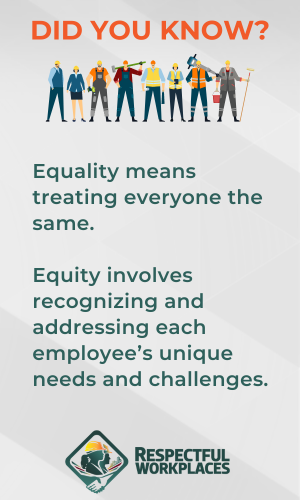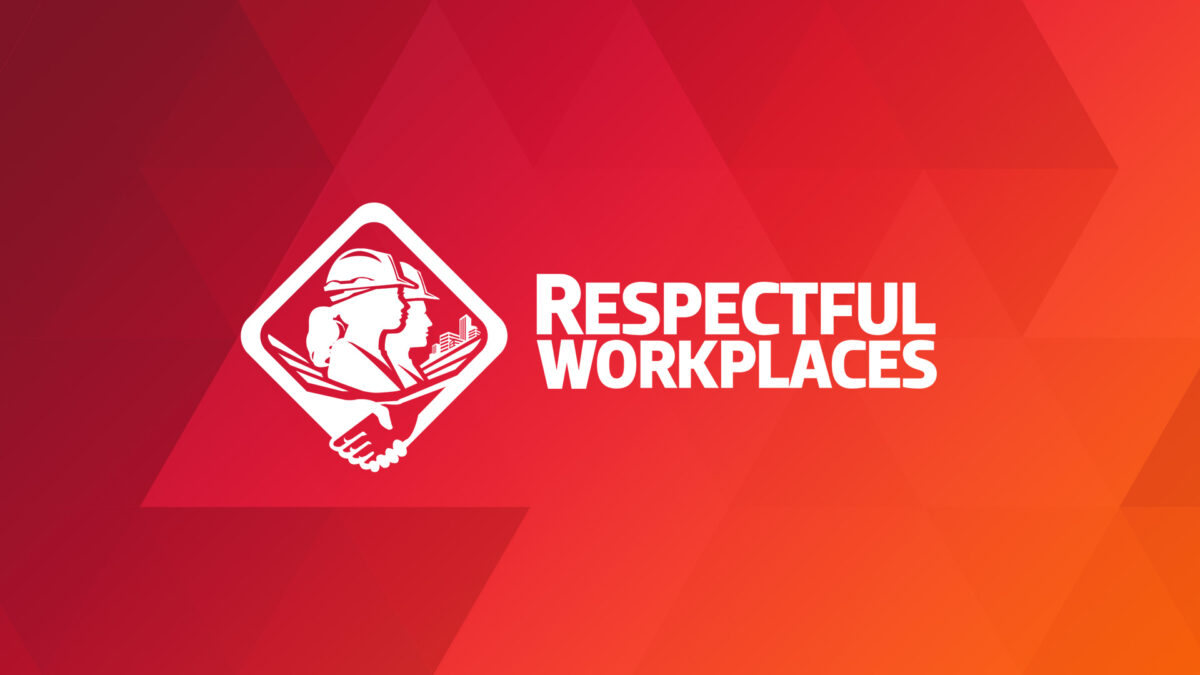There is a big difference between equity and equality.
Equality is treating everyone the same. It means providing the same resources to everyone, regardless of their specific needs.
Equity, on the other hand, involves recognizing and addressing each employee’s unique needs, experiences, and challenges to create a truly inclusive environment. Equity is about distributing resources based on individual needs, and ensuring everyone has the support and opportunities they need to succeed, acknowledging that different individuals require different resources to achieve similar outcomes.
There are three pillars to promoting equity in the workplace.
- Fair treatment: Equity ensures that all employees are treated fairly, with decisions on things like hiring, promotions, and compensation (and all people-related decisions) based on merit rather than personal biases or systemic discrimination. This principle supports a level playing field where everyone can succeed based on their abilities and contributions.
- Access to opportunities: Providing all employees with access to the necessary training, development, and career advancement opportunities is crucial. This helps unlock the full potential of the workforce, driving growth and competitiveness within the organization.
- Recognition and respect for diversity: A workplace culture that values and respects diversity fosters a sense of belonging among employees. This enhances satisfaction and retention and attracts a wider talent pool, enriching the organization’s capabilities.
There are, however, challenges to implementing equity that are present in all workplaces.
Unconscious biases, for example can subtly influence hiring, promotion, and daily operational decisions, often disadvantaging marginalized groups. Overcoming these biases requires awareness and deliberate action.
Systemic barriers, such as deeply embedded organizational policies and practices can limit access to opportunities for certain groups. These barriers must be identified and dismantled to achieve true equity.
Uniformity assumptions, or assumptions that all employees have the same experiences and needs, overlook the unique challenges faced by individuals from different backgrounds and can perpetuate inequities.

The role of leadership in promoting equity
Effective leadership plays a crucial role in creating equitable workplaces. Leaders must be proactive in recognizing and addressing unconscious biases and systemic barriers. Doing so begins with implementing comprehensive training programs to build awareness about biases and promote inclusive practices. Leaders should regularly revise organizational policies to remove systemic barriers and ensure they support equity. Moreover, a genuine commitment to equity must be ingrained in the organizational culture and decision-making processes, making it a fundamental priority at all levels of the organization.
Strategies for promoting equity
To promote equity in the workplace, organizations need to develop inclusive policies that actively encourage diversity and prevent discrimination at every level. Continuous training and development programs are essential for building awareness about biases, fostering inclusive leadership, and enhancing cultural competency among employees. Regularly assessing the effectiveness of equity initiatives is crucial. This involves collecting data on recruitment, retention, promotion rates, and employee satisfaction to ensure that these initiatives are achieving their intended outcomes and identifying areas for improvement.
Case studies: equity in action
Several organizations have successfully implemented equity-focused strategies, leading to more inclusive and productive workplace environments.
Suncor Energy: By forming partnerships and creating employment programs for Indigenous communities, Suncor has enhanced workplace diversity and strengthened its relationships with Indigenous partners.
Shopify has implemented extensive diversity and inclusion training and created clear advancement pathways for equity-deserving groups. This has resulted in a more collaborative workplace culture.
Vancity: This credit union focuses on gender equity and financial inclusion, conducting wage equity reviews, and adjusting salaries to ensure fairness. This transparency has fostered a positive workplace environment.
Sustaining equity in the workplace
Maintaining equity requires ongoing commitment and continuous effort. Leaders must: regularly review policies and practices to ensure they support equitable outcomes; create channels for open dialogue and feedback, involving employees in equity initiatives; and leverage analytics to identify and address equity gaps, adopting strategies that consider the intersectionality of employee identities.
The future of workplace equity
Looking ahead, the focus on workplace equity is likely to become more personalized and data driven.
As technology advances, organizations can better identify and address equity gaps. Embracing the concept of intersectionality will push businesses to adopt more nuanced and inclusive strategies, ensuring that equity efforts reflect the diverse needs and perspectives of their workforce.
Equity in the workplace is about more than just fairness—it involves creating an environment where everyone has the support and opportunities they need to succeed. By addressing the unique challenges and barriers faced by different individuals, organizations can foster a more inclusive and productive workforce. This commitment to equity not only benefits employees but also enhances organizational success and innovation.
Michael Bach is an author and speaker, a thought leader in inclusion, diversity, equity, and accessibility, and an IDEA consultant to BuildForce Canada.

Respectful and Inclusive Workplaces
